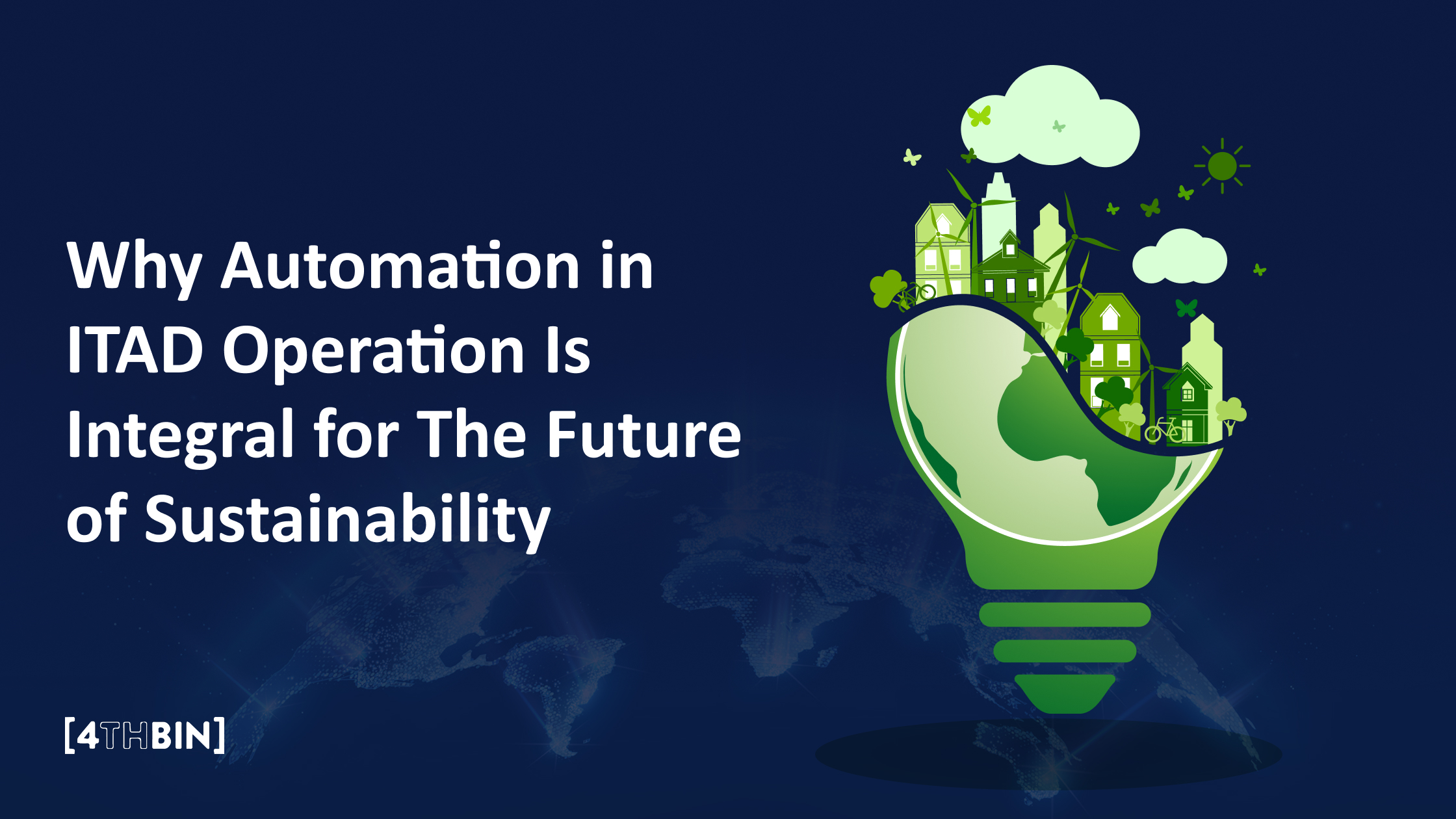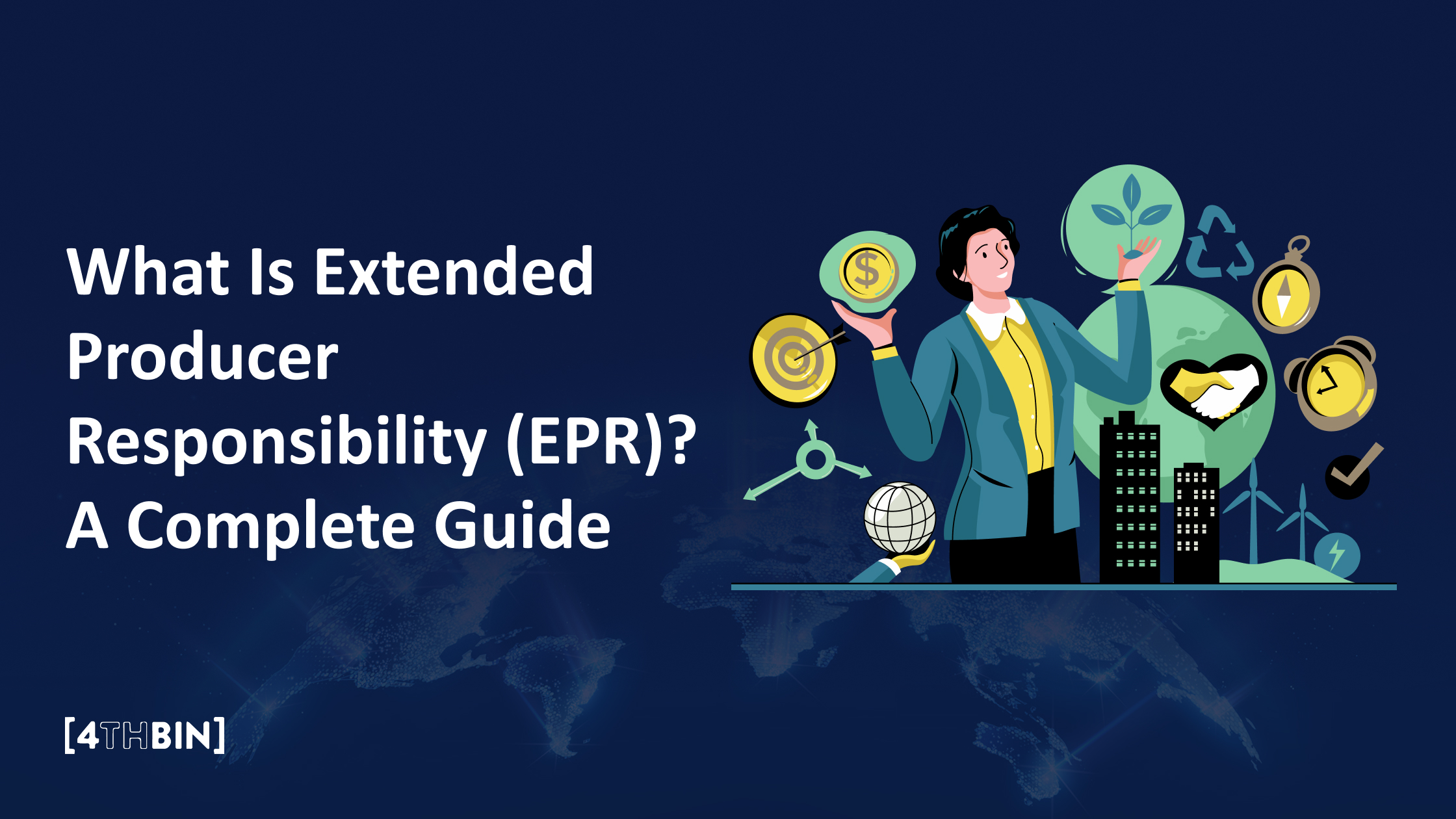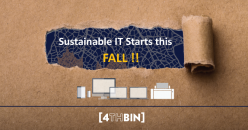Creating a Sustainable Office Environment: E-Waste Edition
Every second, the world discards 800 laptops.
Meanwhile, over 1 billion cellphones and 300 million computers are manufactured annually to meet insatiable demand, growing by 8% annually.
Yet, most of these devices face an unsettling fate—joining the 40 million tons of electronic waste generated globally yearly.
The lifecycle of office electronics, from their shiny debut on desks to their silent demise in landfills, is a story of convenience turned into a global crisis.
On average, cellphone users replace their devices every 18 months, often not because they’re broken but outdated.
This trend amplifies in offices. Devices are stockpiled, neglected, or improperly discarded, creating ripple effects—wasted resources, toxic environmental impact, and significant security risks.
Understanding this lifecycle isn’t just an eco-conscious choice; it’s a necessity. This blog will explore how businesses can employ best practices for reducing e-waste and how to create an effective e-waste policy.
The Lifecycle of Office Electronics: From Desk to Disposal
Office electronics are vital in day-to-day operations, driving productivity and enabling seamless workflows. However, their journey from purchase to disposal often goes unnoticed, leading to inefficiencies, waste, and risks. Understanding this lifecycle is critical to effectively addressing e-waste challenges.
Start of the Journey
Electronics enter the office as shiny, new tools to enhance efficiency. But their journey toward obsolescence begins almost immediately.
Modern electronics are often created with planned obsolescence in mind—manufacturers release frequent updates, rendering older models incompatible with new software or peripherals. For instance, a laptop bought three years ago might struggle to run the latest software updates, even if its hardware remains functional.
Additionally, poor maintenance accelerates the decline of office electronics. Dust buildup in CPUs, failure to replace worn components, or neglecting software updates can shorten the lifespan of otherwise durable devices. This combination of frequent upgrades, evolving technology, and lack of care pushes perfectly functional electronics toward e-waste faster than necessary.
Common Challenges: Mismanagement in Offices
Once electronics lose their immediate utility, many organizations fall into familiar patterns that aggravate e-waste management. A prevalent issue is stockpiling outdated devices. Offices often keep old laptops, printers, and phones in storage “just in case,” only for them to gather dust. This wastes valuable storage space and delays the opportunity to recycle or donate items when they are still useful.
Another frequent mistake is overlooking repair options. A broken screen or sluggish performance often leads to outright replacement rather than repair. This is partly due to the misconception that repairs are costly or ineffective, compounded by the convenience of buying new devices.
The most harmful pitfall is improper disposal. Many organizations discard electronics with general waste, unaware of the environmental and legal consequences. Without clear guidelines, devices containing sensitive data—such as old hard drives or network servers—may end up in landfills, exposing companies to potential data breaches.
The Aftermath: When Improper Disposal Becomes a Risk
The consequences of improper e-waste management are far-reaching, impacting the environment, organizational security, and public perception.
Environmental Hazards
Electronics contain toxic materials such as lead, mercury, and cadmium, which can leach into soil and water when disposed of in landfills. These substances pose significant health risks to humans and wildlife and contribute to long-term ecological damage.
Missed Recycling Opportunities
Improper disposal prevents the recovery of valuable materials like gold, silver, and copper. Recycling these components reduces the need to mine raw materials and conserves natural resources and energy. For example, recycling a single laptop can save enough energy to power several homes daily.
Data Security Risks
Old electronics often contain sensitive data, from financial records to client information. Discarding these devices without secure data erasure creates a severe liability for the organization. Cybercriminals can exploit this data, leading to costly breaches and reputational harm.
By recognizing these challenges and understanding the broader implications of e-waste, organizations can take proactive steps to manage the lifecycle of their electronics responsibly, reducing waste and minimizing risks at every stage.
Best Practices for Reducing E-Waste in the Office
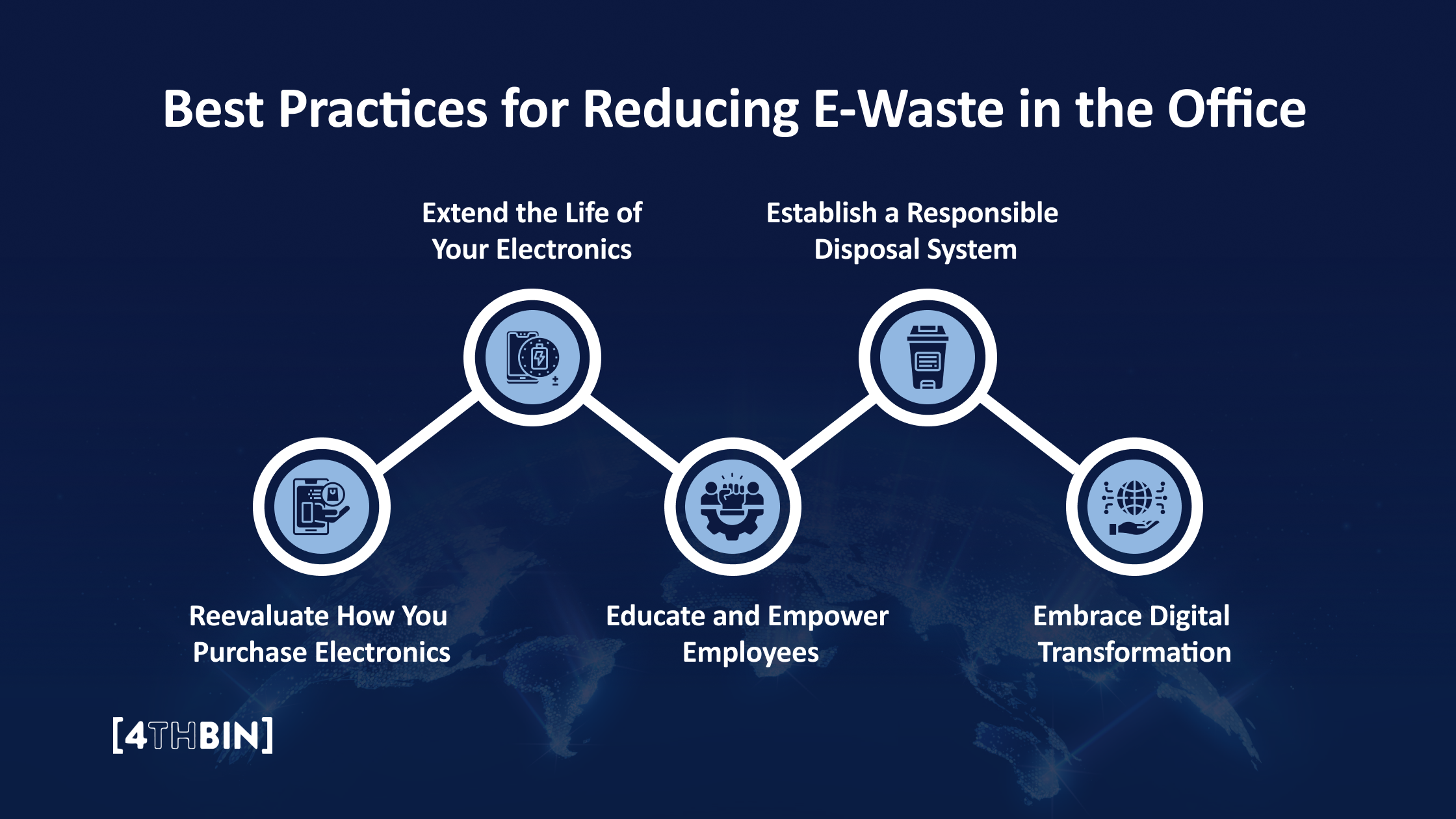
Reducing e-waste in the office isn’t just about being eco-friendly—it’s about building a more innovative, efficient workplace that respects the environment, saves money, and mitigates security risks. By adopting practical and impactful strategies, organizations can significantly reduce electronic waste while cultivating a culture of sustainability. Here’s how:
Reevaluate How You Purchase Electronics
Reducing e-waste starts with smarter procurement. Many offices fall into a pattern of buying more devices than they need or prioritizing cost over quality, which often leads to a higher turnover of electronics. Your organization can instead follow these practices:
Opt for durable, repairable devices: Invest in products with modular designs that allow for easy part replacement. Devices with eco-certifications like Energy Star last longer and are less taxing on the environment.
Consolidate functionality: Instead of purchasing multiple single-purpose devices (e.g., a standalone printer and scanner), choose multi-functional equipment to reduce redundancy and clutter.
Think long-term: Avoid making decisions based solely on upfront costs. Evaluate the total cost of ownership, including maintenance, upgrades, and eventual disposal, to ensure you’re making a sustainable choice.
Extend the Life of Your Electronics
A significant portion of e-waste comes from devices that could have been used longer with proper care. Small changes in how your office manages electronics can make a big difference:
Prioritize maintenance: Regular cleaning and servicing can prevent overheating, improve performance, and extend the lifespan of equipment. For example, cleaning the computer vents can reduce strain on internal components.
Repair, don’t replace: When a device malfunctions, explore repair options before replacing it. Partner with local repair services or use manufacturer programs to fix issues. Even minor repairs, like replacing a cracked laptop screen, can give electronics a second life.
Upgrade where possible: Instead of replacing an older computer because it’s running slowly, consider upgrading the RAM or switching to a solid-state drive (SSD). These minor tweaks can extend the life of those “outdated” devices.
Educate and Empower Employees
Your team plays a critical role in reducing e-waste. Without their buy-in, even the best strategies can fall flat. Build awareness and make sustainability part of your office culture:
Host workshops or training sessions: Teach employees how to care for their devices, identify repairable issues, and responsibly dispose of electronics.
Create incentives: Reward teams or individuals who actively participate in reducing e-waste, whether by reporting unused devices or contributing ideas for sustainable practices.
Set clear policies: Provide easy-to-follow guidelines for managing electronics, from procurement to disposal, so employees know exactly what’s expected.
Establish a Responsible Disposal System
Even with the best intentions, some electronics will eventually end their lifecycle. When that happens, having a reliable disposal plan is crucial:
Set up collection points: Designate clearly labeled e-waste bins in high-traffic areas where employees can drop off unused or broken electronics.
Partner with certified recyclers: Work with organizations that adhere to strict environmental standards, ensuring that materials are recycled safely and sustainably.
Donate functional devices: Many nonprofits, schools, and community organizations accept donations of working electronics. This extends the life of devices and supports communities in need.
Embrace Digital Transformation
The fewer physical devices you rely on, the less e-waste your office generates. By transitioning to digital workflows, you can reduce the need for specific hardware altogether:
Move to the cloud: Replace local servers with cloud-based storage to reduce hardware dependency. This also lowers energy consumption and simplifies device management.
Go paperless: Digital signing tools, cloud collaboration platforms, and mobile scanning apps can eliminate the need for printers, copiers, and scanners.
Reducing e-waste in the office is about more than just minimizing environmental impact. By implementing these best practices, your office can take meaningful steps toward sustainability, proving that even small changes can lead to significant results.
How to Set Up a Comprehensive E-Waste Policy for Your Organization

Developing a comprehensive e-waste policy is essential for organizations aiming to manage their electronics responsibly. A well-curated policy reduces environmental impact, safeguards sensitive data, and demonstrates a commitment to sustainable practices. Here’s a step-by-step process for creating and implementing an effective policy:
Step 1: Conduct an E-Waste Audit
The foundation of any e-waste policy begins with understanding the current state of electronics in your organization. Start by creating an inventory of all devices, including those actively in use, in storage, or nearing the end of their life. This list should cover everything from computers and phones to peripherals like printers and external drives.
Once the inventory is complete, categorize the devices based on their condition—functional, repairable, or beyond use. This process helps identify what can be reused or refurbished versus what needs recycling. Additionally, you must pay attention to devices containing sensitive data, such as hard drives and servers, which may require special handling to ensure secure disposal. Conducting an audit allows your organization to establish a clear baseline and identify areas of improvement in managing electronics.
Step 2: Define Goals and Objectives
A successful e-waste policy starts with clear, measurable goals. These objectives must include reducing the overall volume of e-waste generated, ensuring 100% secure data destruction, increasing the percentage of devices repaired or donated, and complying with all relevant e-waste regulations. By defining these goals, your organization can create a roadmap for success and establish metrics to evaluate progress.
Step 3: Develop Stringent Guidelines
Effective e-waste management begins at the point of purchase. When acquiring new electronics, prioritize durable, energy-efficient devices developed for easy repair or upgrade. Partnering with manufacturers that offer extended warranties or take-back programs can also reduce the environmental footprint.
Once devices are in use, establish regular maintenance schedules to extend their lifespan. Simple practices like keeping software up-to-date, cleaning internal components, and replacing worn parts can prevent unnecessary replacements.
Additionally, identify devices nearing the end of their lifecycle and create a strategy to replace them before they fail, avoiding emergency replacements that often lead to improper disposal.
Step 4: Establish Secure Disposal Processes
When devices reach the end of their lifecycle, secure disposal is critical to protecting your organization and the environment. Begin by ensuring that all data is completely erased before disposal. Your organization must partner with e-waste recyclers, like 4THBIN, who specialize in certified data-wiping software or, for susceptible information, physical destruction methods like shredding hard drives.
Ensure devices that cannot be repaired or donated are recycled responsibly. Proper recycling prevents harmful chemicals and heavy metals from entering landfills while also recovering valuable materials like gold and copper. Your policy should clearly outline the steps for secure and sustainable disposal to ensure consistency across the organization.
Step 5: Partner with a Certified E-Waste Recycler
Working with a certified e-waste recycler is a vital component of your policy. These professionals ensure that your organization’s discarded electronics are handled safely and in compliance with environmental regulations. Your organization must seek the assistance of recyclers certified by organizations such as e-Stewards or R2, such as 4THBIN, which adhere to rigorous standards for ethical recycling.
Establish a partnership with a recycler that provides end-to-end services, including secure data destruction, material recovery, and environmental compliance documentation. These certifications and records give your organization peace of mind and demonstrate accountability to stakeholders. Make recycling pickups a regular part of your e-waste strategy to prevent stockpiling and streamline the disposal process.
Step 6: Set Up Internal Collection Points
To ensure ease of participation, set up dedicated e-waste collection points in high-traffic areas of your office, such as break rooms or near IT support desks. These collection points should be secure, especially if they will hold devices containing sensitive data, and clearly labeled with guidelines on what can and cannot be placed in them.
Collection points encourage employees to dispose of outdated or broken electronics responsibly, reducing the chances of devices being discarded improperly. Establish a schedule for regularly transferring collected items to your certified e-waste recycler or preparing them for donation.
Step 7: Educate and Train Employees
Employee engagement is critical to the success of your e-waste policy. Start by educating your team on the environmental and organizational risks of improper disposal. Your organization can host training sessions to explain the policy, including identifying unused devices, using collection points, and following disposal protocols.
To keep employees informed and motivated, you can combine training programs with ongoing communication, such as email reminders, infographics, or posters. You can also encourage participation by rewarding departments or individuals contributing to the organization’s e-waste reduction goals.
Step 8: Monitor & Evaluate
Implementing a policy is only the beginning. Regular monitoring and evaluation ensure the policy remains adequate and relevant. Track metrics such as the volume of e-waste collected, the percentage recycled or donated, and any cost savings achieved through repair or trade-in programs. Use this data to identify gaps or inefficiencies in your process and adjust as needed.
Additionally, stay informed about new recycling technologies or changes in e-waste regulations. Update your policy to reflect these advancements and continue improving your organization’s approach to managing electronics.
With a proactive and structured approach, e-waste management becomes necessary and an opportunity to lead in sustainability and corporate responsibility.
Elevate Your Office’s E-Waste Strategy with 4THBIN
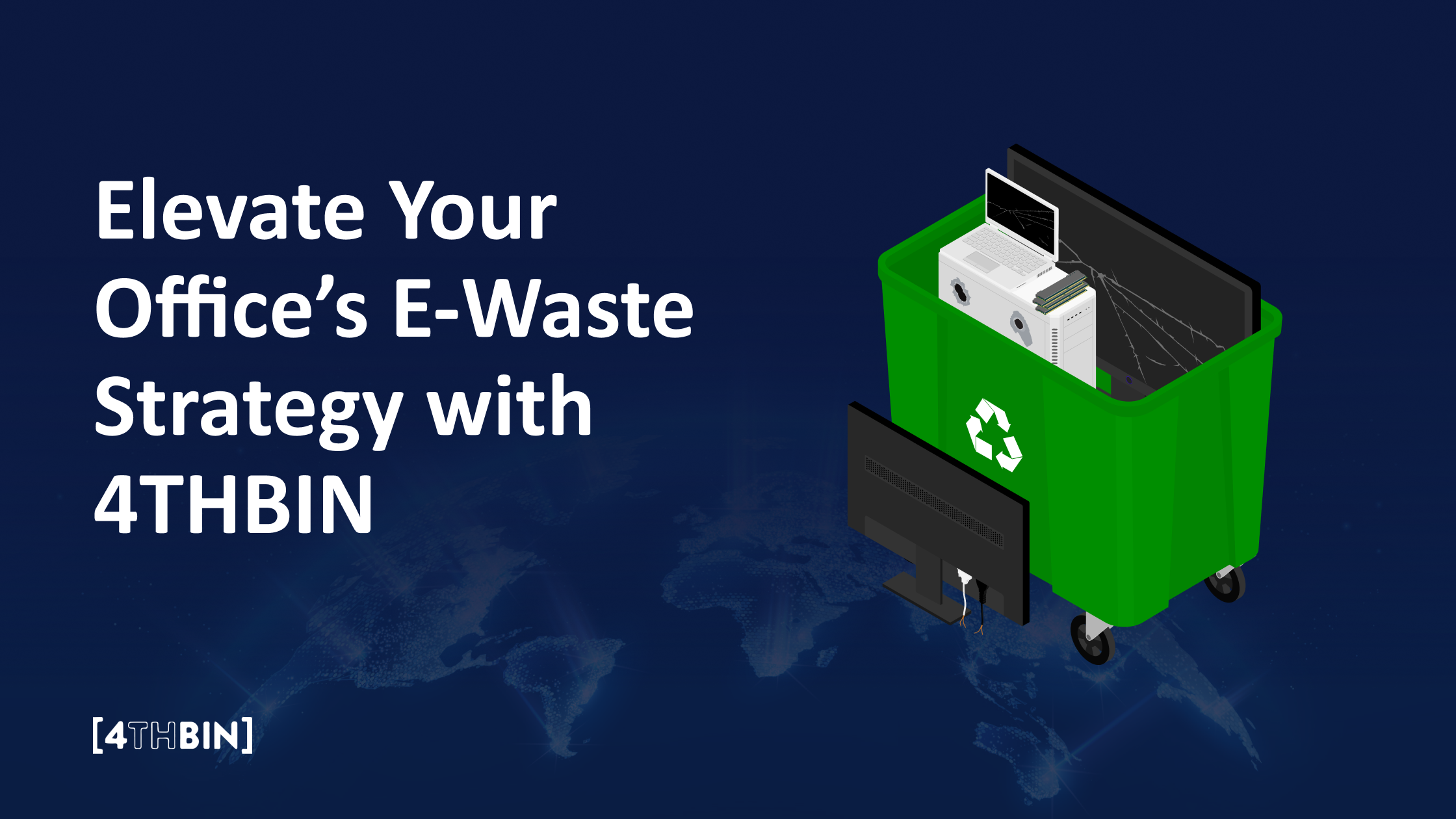
With 4THBIN’s certified e-recycling solutions, you can ensure safe, secure, and eco-friendly disposal of your outdated electronics.
With over a decade of expertise, 4THBIN has partnered with over 10,000 organizations across the United States, including Fortune 100 companies and startups, to transform e-waste into a valuable resource.
We prioritize data security and environmental impact, ensuring that sensitive information is completely safeguarded with our certified data destruction services. This eliminates the risks of data recovery associated with improper disposal.
Our customizable e-waste recycling solutions include secure RemoteReturn mail-in services and convenient on-site collection options, allowing you to choose a plan that best fits your organization’s needs.
Dispose of Your Outdated Electronics Safely


